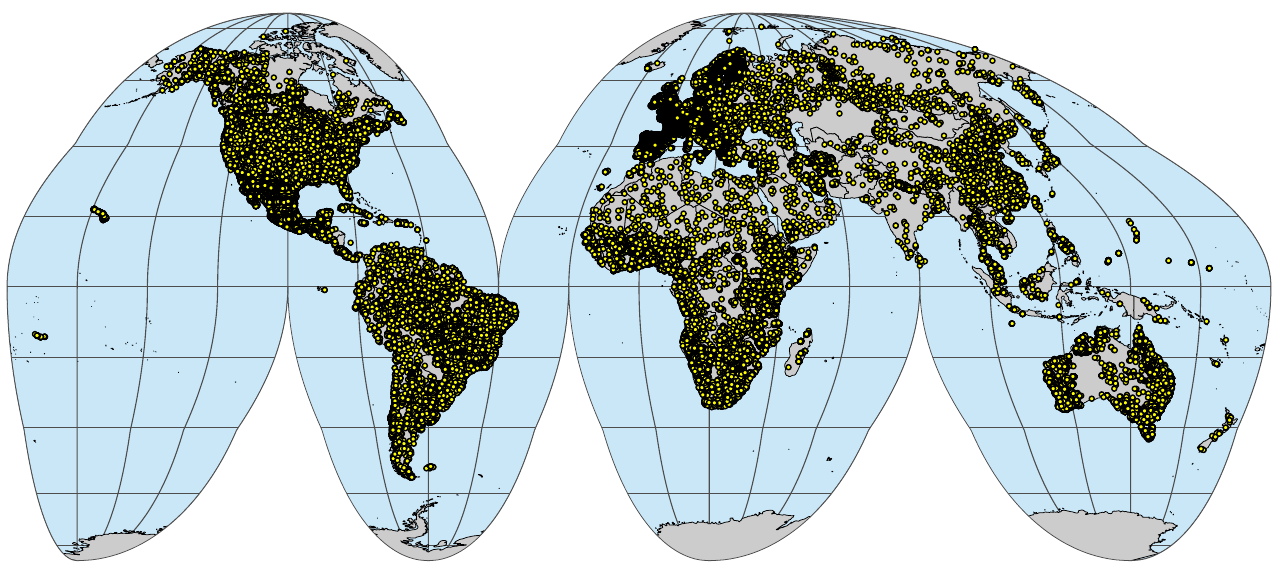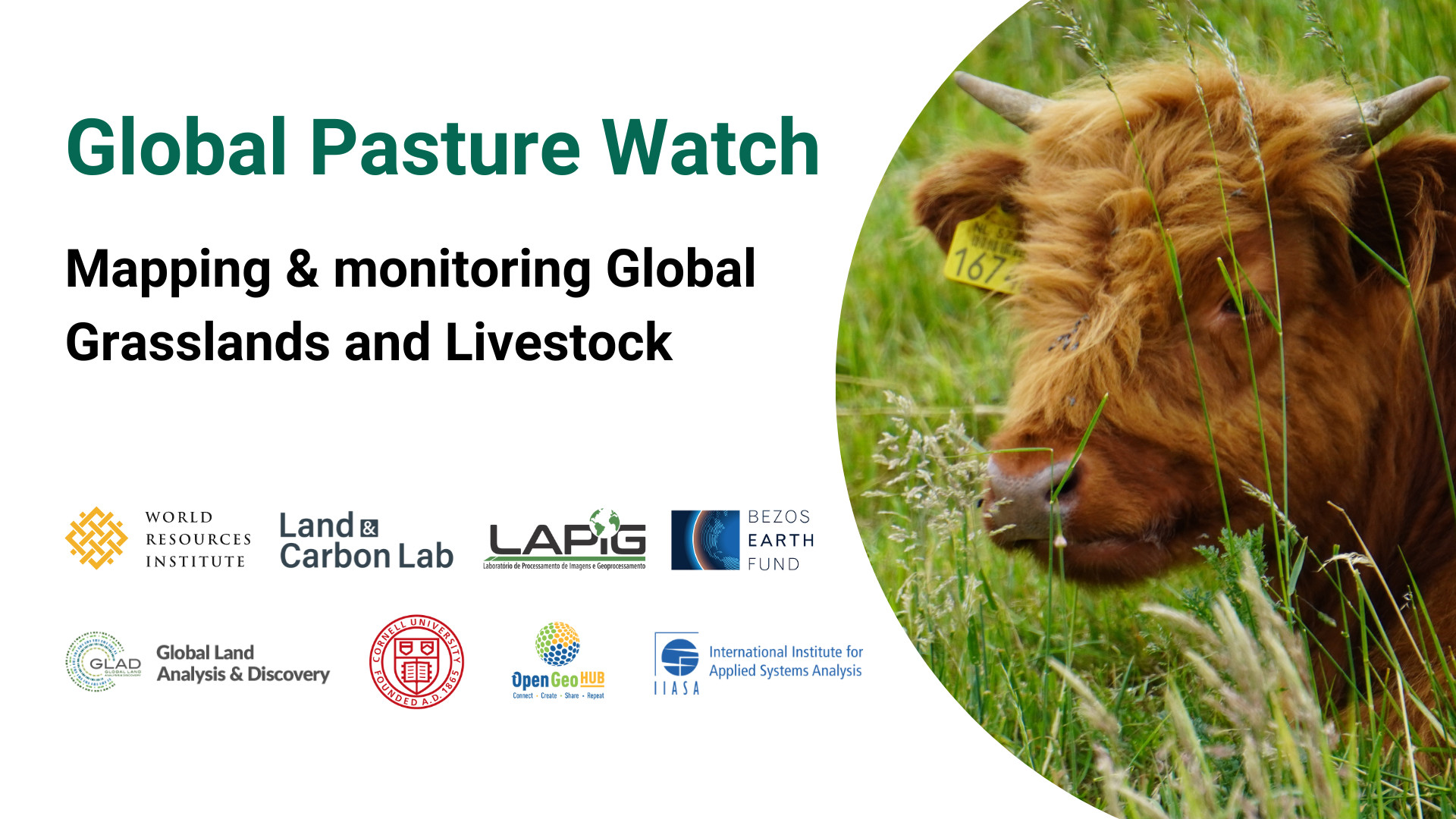
About
This is a public compendium of global, regional, national and sub-national soil samples and/or soil profile datasets (points with Observations and Measurements of soil properties and characteristics). Datasets listed here, assuming compatible open data license, are afterwards imported into the Global compilation of soil chemical and physical properties and soil classes and eventually used to create a better open soil information across countries. The specific objectives of this initiative are:
- To enable data digitization, import and binding + harmonization,
- To accelerate research collaboration and networking,
- To enable development of more accurate / more usable global and regional soil property and class maps (typically published via https://OpenLandMap.org),
Download compiled data
Compiled data (imported, standardized, quality-controlled) is available through a diversity of standard formats:
- RDS file (native R data format);
- GPKG file (Geopackage file ready to be opened in QGIS);
All files can be downloaded from the /out directory.
Add your own data
The minimum requirements to submit a dataset for inclusion to the OpenLandMap repository are:
- License and terms of use clearly specified AND,
- Complete and consistent metadata that can ensure correct standardization and harmonization steps AND,
- At least 50 unique spatial locations AND,
- No broken or invalid URLs,
Data sets that do NOT satisfy the above listed minimum requirements might be removed. If you discover an issue with license, data description or version number of a dataset, please open a Github issue.
Recommended settings for all datasets are:
- Peer-reviewed versions of the datasets (i.e. a dataset accompanied with a peer-reviewed publication) should have the priority,
- Register your dataset (use e.g. https://zenodo.org) and assign a DOI to each version,
- Provide enough metadata so that it can be imported and bind with other data without errors,
- If your dataset is a compilation of previously published datasets, please indicate in the description,
Information outdated or missing? Please open an issue or best do a correction and then a pull request.
Existing soil data projects and initiatives
Multiple international organizations from FAO’s Global Soil Partnership to UNCCD’s Land Degredation Neutrality, European Commission and similar, support soil data collation projects and especially curation of the legacy soil data. Some existing soil Observations and Measurements (O&M) soil data initiatives include:
- FAO’s Data Hub,
- FAO’s Global SoilInformation System (GLOSIS),
- Fine Root Ecology Database (FRED),
- FLUXNET global network,
- Global database of soil nematodes,
- Global soil macrofauna database,
- Global soil respiration database (SRDB),
- International Soil Modeling Consortium (ISMC),
- International Soil Moisture Network,
- International Soil Radiocarbon Database (ISRaD),
- International Soil Carbon Network (ISCN),
- LandPKS project,
- Long Term Ecological Research (LTER) Network sites,
- National Ecological Observatory Network (NEON),
- Open Soil Spectral Library (OSSL),
- Open Bodem Index,
- ORNL DAAC theme soil,
- Soils Data Harmonization (SoDaH),
- WoSIS Soil Profile Database,
UN’s FAO hosts International Network of Soil Information Institutions, which we recommend joining and actively contributing. INSII and FAO’s Global Soil Partnership aim at developing and hosting Global SoilInformation System (GLOSIS), although this does not serve yet any soil observations and measurements.
A more in-depth inventory of all various national and international soil datasets can be found in:
- Rossiter, D.G.,: Compendium of Soil Geographical Databases
Target soil variables
Soil variables of interest include:
- Chemical soil properties:
- Soil organic carbon, total carbon, total nitrogen,
- Soil pH, effective Cation Exchange Capacity (eCEC),
- Soil sodicity (presence of a high proportion of sodium ions relative to other cations),
- Macro-nutrients: extractable — potassium (K), calcium (Ca), sodium (Na), magnesium (Mg) and similar,
- Micro-nutrients: phosphorus (P), sulfur (S), iron (Fe), zinc (Zn) and similar,
- Soil pollutants, heavy metals and similar,
- Electrical conductivity,
- Physical soil properties:
- Soil texture and texture fractions: silt, clay and sand, stone content,
- Bulk density, depth to bedrock and similar,
- Hydraulic conductivity, water content — Field Capacity (FC; the amount of water held in the soil after it has been fully wetted and free drainage has stopped), Permanent Wilting Point (PWP; the soil moisture condition at which the plant could not obtain water and would wilt and die), Plant Available Water Capacity (PAWC; the amount of water between field capacity and permanent wilting point water holding capacity) and similar,
- Soil temperature,
- Soil biological / biodiversity variables:
- Soil biomass,
- Soil micro-, meso-, macro- and mega-fauna abundance,
- Soil biodiversity indices,
- Soil classification / taxonomy variables:
- Soil type,
- Soi suitability classes, soil fertility classes,
- Soil texture classes and families,
- Soil absorbances / soil spectroscopy variables:
- Soil absorbance in VIS-NIR and MIR part of spectra,
Recommended O&M standards
As a general rule of thumb we recommend all contributors to use the following general scheme to organize Soil Observations & Measurements with 3–4 main tables and metadata + legends organized in other tables:
- Soil site information (geographical coordinates, land use / land cover, soil classification etc),
- Soil horizon information (soil observations and measurements specific to soil layers / diagnostic horizons),
- Proximal soil sensing information including soil scans,
For making soil observations and measurements we recommend following the USDA National Cooperative Soil Survey (NCSS) Soil Characterization Database codes and specification as much as possible. These are explained in detail in the Kellogg Soil Survey Laboratory Methods Manual and The Field Book for Describing and Sampling Soils. Likewise, FAO Guidelines for soil description, and the FAO’s GSOC measurement, monitoring, reporting and verification (MRV) protocol also explain in detail how to collect soil samples and setup a system for monitoring soil organic carbon.
It is recommended that one should, as much as possible, use the international standards and references. Some highly recommended protocols and standards include:
- UUID generator tool to generate unique ID’s for unique soil sites, horizons, samples etc (to convert an existing local ID to UUID, best use
openssl::md5(local_id)), - Open Location Codes to generate geographic location codes,
- OGC standards to prepare metadata and exchange data across field / computer systems;
- ISO8601 to save time and date information,
- ISO3166 for country / administrative codes,
- GPS and WGS84 longitude and latitude in decimal degrees to save the location information,
- International DOI foundation to refer to specific dataset and/or publication,
- USDA soil classification system and World Reference Base to classify soils,
- USDA soil texture calculator to determine and share soil texture classes including texture-by-hand,
- Kellogg Soil Survey Laboratory Methods Manual for reference physical and chemical soil property determination in laboratory,
- Soils Laboratory Manual, K-State Edition,
- GLOSOLAN Standard Operating Procedures (SOPs),
- Open Bodem Index specification,
Contributing
Please feel free to contribute entries. See GitHub repository for more detailed instructions.
Contributors
If you contribute, add also your name and Twitter, ORCID or blog link below:
Tomislav Hengl, Jonathan Sanderman, Mario Antonio Guevara Santamaria,
This document is based on the https://www.bigbookofr.com/ repository by Oscar Baruffa.
Disclaimer
The data is provided “as is”. OpenGeoHub foundation and its suppliers and licensors hereby disclaim all warranties of any kind, express or implied, including, without limitation, the warranties of merchantability, fitness for a particular purpose and non-infringement. Neither OpenGeoHub foundation nor its suppliers and licensors, makes any warranty that the Website will be error free or that access thereto will be continuous or uninterrupted. You understand that you download from, or otherwise obtain content or services through, the Website at your own discretion and risk.
Licence
This website/book is free to use, and is licensed under the Creative Commons Attribution-ShareAlike 4.0 International License.
Please note that each input data set might have a different license than indicated above. We have done our best to track down all licenses and terms of use, however, if you think that your data set has been imported incorrectly or should not be used to produce derivative works, please contact us and we will correct asap.
How to cite

To cite this dataset please use:
@dataset{hengl_t_2023_4748499,
author = {Hengl, T. and Gupta, S. and Minarik, R.},
title = {{An Open Compendium of Soil Datasets: Soil Observations and Measurements}},
year = 2023,
publisher = {OpenGeoHub foundation},
address = {Wageningen},
version = {v0.2},
doi = {10.5281/zenodo.4748499},
url = {https://doi.org/10.5281/zenodo.4748499}
}Literature
Some other connected publications and initiatives describing collation and import of legacy soil observations and measurements that might interest you:
- Arrouays, D., Leenaars, J. G., Richer-de-Forges, A. C., Adhikari, K., Ballabio, C., Greve, M., … & Heuvelink, G. (2017). Soil legacy data rescue via GlobalSoilMap and other international and national initiatives. GeoResJ, 14, 1-19.
- Beillouin, D., Cardinael, R., Berre, D., Boyer, A., Corbeels, M., Fallot, A., … & Demenois, J. (2021). A global overview of studies about land management, land‐use change, and climate change effects on soil organic carbon. Global Change Biology. https://doi.org/10.1111/gcb.15998
- Batjes, N. H., Ribeiro, E., van Oostrum, A., Leenaars, J., Hengl, T., & de Jesus, J. M. (2017). WoSIS: providing standardised soil profile data for the world. Earth System Science Data, 9(1), 1. https://doi.org/10.5194/essd-9-1-2017
- Billings, S. A., Lajtha, K., Malhotra, A., Berhe, A. A., de Graaff, M. A., Earl, S., … & Wieder, W. (2021). Soil organic carbon is not just for soil scientists: measurement recommendations for diverse practitioners. Ecological Applications, 31(3), e02290. https://doi.org/10.1002/eap.2290
- Brown, G., Demeterio, W. and Samuel-Rosa, A. (2021). Towards a more open Soil Science. SciELO in Perspective, 2021 [viewed 17 June 2021].
- Gupta, S., Hengl, T., Lehmann, P., Bonetti, S., & Or, D. (2021). SoilKsatDB: global database of soil saturated hydraulic conductivity measurements for geoscience applications. Earth System Science Data, 13(4), 1593-1612. https://doi.org/10.5194/essd-13-1593-2021
- Hengl, T., MacMillan, R.A., (2019). Predictive Soil Mapping with R. OpenGeoHub foundation, Wageningen, the Netherlands, 370 pages, https://soilmapper.org, ISBN: 978-0-359-30635-0.
- Moorberg, C. J., & Crouse, D. A. (2017). An open‐source laboratory manual for introductory, undergraduate soil science courses. Natural Sciences Education, 46(1), 1-8.
- Ramcharan, A., Hengl, T., Beaudette, D., & Wills, S. (2017). A soil bulk density pedotransfer function based on machine learning: A case study with the NCSS soil characterization database. Soil Science Society of America Journal, 81(6), 1279-1287. https://doi.org/10.2136/sssaj2016.12.0421
- Ros, G. H., Verweij, S. E., Janssen, S. J., De Haan, J., & Fujita, Y. (2022). An Open Soil Health Assessment Framework Facilitating Sustainable Soil Management. Environmental Science & Technology, 56(23), 17375-17384.
- Rossiter, D.G.,: Compendium of Soil Geographical Databases.
About OpenGeoHub
OpenGeoHub foundation is a not-for-profit research foundation located in Wageningen, the Netherlands. We specifically promote publishing and sharing of Open Geographical and Geoscientific Data, using and developing Open Source Software and encouraging and empowering under-represented researchers e.g. those from ODA recipient countries and female researchers. We believe that the key measure of quality of research in all sciences (and especially in geographical information sciences) is in transparency and reproducibility of the computer code used to generate results (read more in: “Everyone has a right to know what is happening with the planet”).
Acknowledgments
SoilSpec4GG is a USDA-funded Food and Agriculture Cyberinformatics Tools Coordinated Innovation Network NIFA Award #2020-67021-32467 project. It brings together soil scientists, soil spectroscopists, soil informaticians, data scientists and software engineers to overcome some of the current bottlenecks preventing wider and more efficient use of soil spectroscopy. For more info refer to: https://soilspectroscopy.org/
EcoDataCube.eu project is co-financed by the European Union (CEF Telecom project 2018-EU-IA-0095).
EarthMonitor.org project has received funding from the European Union’s Horizon Europe research an innovation programme under grant agreement No. 101059548.
AI4SoilHealth.eu project has received funding from the European Union’s Horizon Europe research an innovation programme under grant agreement No. 101086179.



